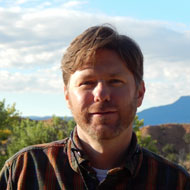BLM Public Comment Meeting
Chaco Administrative Mineral Withdrawal Proposal
Albuquerque, April 29, 2022
Mark Allison, Executive Director, New Mexico Wild
 Good morning, my name is Mark Allison, and I am the executive director of New Mexico Wild. New Mexico wild is an independent, statewide, grassroots, organization dedicated to protecting New Mexico’s lands, waters, and wildlife with thousands of supporters throughout New Mexico and beyond. We have been working to protect the greater Chaco area for over a decade. I want to thank you for hosting this meeting and for the opportunity
Good morning, my name is Mark Allison, and I am the executive director of New Mexico Wild. New Mexico wild is an independent, statewide, grassroots, organization dedicated to protecting New Mexico’s lands, waters, and wildlife with thousands of supporters throughout New Mexico and beyond. We have been working to protect the greater Chaco area for over a decade. I want to thank you for hosting this meeting and for the opportunity
to make comment today about why protecting greater Chaco is necessary and urgent. And I thank Secretary Haaland for her leadership proposing this administrative mineral withdraw in this one-of-a-kind and sacred place. On behalf of the staff, board of directors, and our members, I stand in strong support of the proposal.
Over the years, we have seen oil and gas activity on public lands creep steadily closer and closer to Chaco Culture National Historical Park. Surrounding the Park are some of the last remaining blocks of unleased federal land in the Farmington Field Office. Chaco and sites in the surrounding landscape are part of the Chaco Culture World Heritage Site. This is the only such site under the care and protection of BLM.
In recent years, and in response to encroaching oil and gas activity, the All Pueblo Council of Governors has repeatedly called on the federal government to enact stronger protections for the Greater Chaco Landscape. In particular, APCG has requested that minerals on federal lands within approximately ten miles of Chaco be withdrawn from future oil and gas leasing.
For some historical context and for the record:
- In 2003, BLM finalized the Farmington RMP, which opened over 90 percent of the Farmington Field Office to oil and gas leasing, including nearly all the federal lands surrounding Chaco.
- Since 2009, the oil and gas industry has repeatedly targeted federal lands within ten miles of Chaco for additional leasing, including highly sensitive areas along the Great North Road and nearly adjacent to the park’s boundaries.
- On each occasion, the Pueblos and/or the Hopi Tribe were forced to respond and reiterate their opposition to further leasing in the area.
- While BLM ultimately withdrew the proposed leases after the objections were made, federal lands surrounding Chaco remain open to leasing under the Farmington RMP and could be targeted again at some point in the future.
- In 2014, BLM initiated a plan amendment process for the Farmington RMP.
- In February 2020, BLM/BIA released a draft version of the RMP Amendment. BLM’s preferred alternative would allow leasing throughout the Greater Chaco Landscape, including on lands that directly border Chaco, as well as numerous other sensitive cultural areas.
- At the time, APCG described the draft plan as a “significant step backwards” and reiterated its request that these lands be set aside from oil and gas leasing.
It is estimated that the northern portion of the proposed protection area alone has over 4,000 archeological and cultural sites. While humans have had a continuous presence here for time immemorial, the greater Chaco landscape constitutes a living cultural landscape of great spiritual significance to the Puebloan and Dineh people today.
Recognition and respect for this fact alone justifies and demands that protections be put in place so that this continuing threat of desecration can be removed.
And there are many other reasons to enact this mineral withdrawal:
- Night Skies. Astronomy was a cornerstone of the Chacoan Culture and by preserving the dark night skies, we show respect to this part of Chaco’s history.
- Paleontology. The region is of paleontological importance, with well-preserved fossils such as petrified logs, leaves, turtles, and dinosaurs.
- Wildness. We conducted an inventory of Lands with Wilderness Characteristics in the area several years ago and estimate that there are only about 30,000 acres of areas left that are roadless and that have wilderness characteristics.
- Natural beauty. The greater Chaco region is scenic, breathtaking, and beautiful.
- Wildlife habitat. The area is important habitat for an array of species including turkey, mule deer, black bear, elk, and birds of prey.
- Climate change.
- Public health. Development continues to do significant harm to air quality and area residents.
New Mexico Wild is proud to stand in solidarity with the All Pueblo Council of Governors and their leadership calling for protections. This withdrawal is a crucial step toward providing the Greater Chaco Landscape the protections that it deserves.
We are also supportive of the broader “Honoring Chaco” Initiative and are eager to see BLM and the Bureau of Indian Affairs engage with Tribes, impacted communities, and other stakeholders to build collaborative management frameworks for the landscape towards a sustainable future for the region.
Thank you.
This article was written by Mark Allison, New Mexico Wild Executive Director
###

